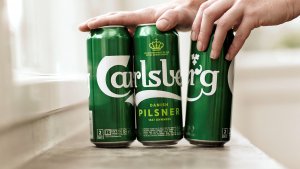The Britvic story is just one example of commercial success driven by smart, long-term investment in branding.
Branding Matters – CFO Lessons From The Carlsberg-Britvic Deal
The Britvic story is just one example of commercial success driven by smart, long-term investment in branding.

Most corporate takeovers are fairly unremarkable. They matter to the people who work at or own the companies involved, but there’s no reason to pause and look more deeply into it – most of them are simple cases of efficiencies of scale across R&D, marketing, production, distribution and so on.
Yet occasionally there’s one that merits closer attention. It provides insight into the deeper trends shaping business, and provides valuable lessons for those leading companies. The recent takeover by Danish brewer Carlsberg of Britvic, the nearly 100-year old owner of British soft drink icons like Tango, Robinsons squash, and J2O is one such story.
Specifically for those in the world of finance, it provides clear lessons not only in the importance of investing in branding – an area where it is typically difficult to quantify the return on investment and so difficult to justify those investment – but also, crucially how to make those investments for maximum impact in today’s market.
Profitable icons
There were a number of reasons for Carlsberg to choose Britvic. As consumers increasingly reduce alcohol intake it’s hardly a surprise to see a brewer acquiring a soft drinks company. It also gives Carlsberg access to PepsiCo’s significant bottling division. But underpinning it all is the fact that, from Robinsons to Tango and J2O, Britvic is home to an established roster of iconic brands.
Iconicity does not always deliver profitability. Think Lilt, Campbell’s Soup or Caramac. Once staples of the grocery aisles, they’re now discontinued. In contrast, Robinsons, Tango, and J2O continue to thrive, and provided the foundation for a strong Britvic valuation and now an exciting new chapter as part of Carlsberg Britvic.
But it’s not enough to simply pour money into branding. It needs to be done effectively, and the team at Britvic have been taking a smart approach in two key ways.
In it for the long haul
Firstly, they have taken a long-term approach to this. They have always understood the truth that brand equity, loyalty and value are accumulative. They happen over time and can’t be switched on and off. J2O since 1998, Tango since 1950, and Robinsons from as far back as 1823 – for decades these brands have played a part in our national culture and so have forged strong associations in people’s minds.
Crucially, however, they have not remained the same. All have evolved with the times. Tango is perhaps the most striking example of this. Acquired by Britvic in 1987, it soon adopted an incredibly striking positioning around maniacal and irreverent energy. It was perfectly of its time and led to a sort of incidental brand asset – “You’ve been Tango-ed” as a verbal/physical proto-meme that played out in pretty much every playground in England. But it managed to evolve seamlessly from there. Consumers still see it as fun but in a very different way.
Where others take a stop, start approach to these investments, Britvic has consistently invested in and curated its brands, reinventing them as each generation has come of age. As a result, those brands have become woven into the fabric of British life.
A core and more strategy
More recently, it has been a leading exponent of the core and more strategy. While most brands allow for a rebrand every ten to 15 years, since 2009 we’ve redesigned Robinsons every five years. The result is a series of core brand assets that are distinctive and memorable. Alongside this, we’ve helped them launch Robinsons Fruit Cordials, Robinsons Creations, Benefits, Minis, and many other innovations.
This strategy of a distinctive but evolving core brand surrounded by continual eye-catching innovation has made Robinsons the leading cordial brand in the UK – in 2022 sales reached £200m with the brand present in half of British households, and 9 million glasses consumed daily.
We’ve worked with the teams on Tango, J2O and other Britvic brands using the same strategy – most notably with the incredibly successful Tango Editions from Berry Peachy to Paradise Punch, Mango, Blast, and Strawberry Smash – and the results have been remarkable: in 2009 Britvic’s revenues were £980m; by 2024 it had nearly doubled to £1.89bn.
Far more than window dressing
Too often branding is dismissed as superficial window dressing – an issue for the marketing department, not the serious people in the finance function or Boardroom. The Britvic story shows how wrong that thinking is.
The Britvic story is just one example of commercial success driven by smart, long-term investment in branding. Legendary investor Warren Buffett famously describes this as the economic moat – the competitive difference that enables a company to fend off rivals, and defend a price advantage. Its inherent intangibility makes it difficult to value investments in brand, but it is precisely that intangibility that gives it its value – if you can’t touch it you can’t copy it.
Some do this with unique technology (Google), hyper-responsive delivery service (Amazon) or trademarked intellectual property (almost every pharmaceutical brand) but a strong brand is perhaps the most effective and popular. Coca-Cola, Apple and Nike are the highest profile examples, but Robinsons, Tango, and J2O have been doing it too.
With the even greater resources available as part of Carlsberg, it will be exciting to see where these much-loved British brands go next.
Ed Hayes is chief strategy officer of Bloom
Thanks for signing up to Minutehack alerts.
Brilliant editorials heading your way soon.
Okay, Thanks!

